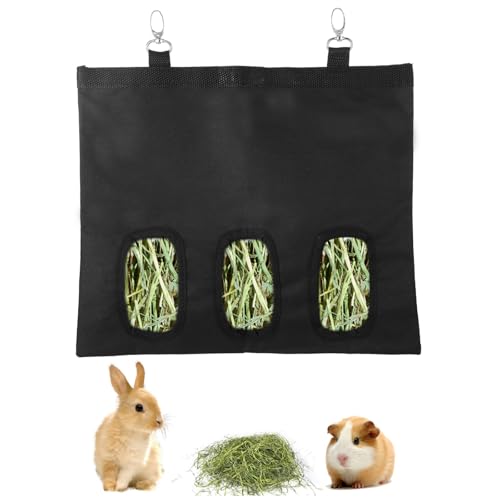First, let me start with a disclaimer: do not do this "experiment" at home! The following situations were a result of carelessness, and buns could have been hurt or died or eaten by predators when they were meandering about. I am setting out the information about plants that were consumed because it challenges what I had learned and practiced, and I am curious. But please do not take it as advice.
I have had a few escapees this summer who have been able to pillage my yard and garden. The amount of time where he/she has been running around and had free access to whatever the bun felt like eating has ranged from one day to two weeks, in one instance. While this has been frustrating and worrisome, it has given me the chance to observe what my little motley herd would gravitate towards. They loved beans and would eat them to the ground. They ignored the squash, pumpkins and cucumbers. Inhaled the herbs--basil, oregano, dill, cilantro. Ate various and sundry weeds and grass, but ignored the blueberry plants. But my biggest surprises: they ate select tomato plants--one escapee ate the plant stem to the ground, then dug it up looking for more-- and they also nibbled on a pepper plant. They also ate my rhubarb. The first bun that ate the rhubarb, I caught immediately and watched for a few weeks to see if there would be any systemic problems. Nothing. Subsequent escapees also gravitated right to the rhubarb to the point where one of my plants is a few nubs struggling to grow back.
I have no intent of feeding them the tomatoes or rhubarb, but it did make me think, since a few different rabbits were enticed by the same foods at different times. Unfortunately I don't know which varieties of tomatos it was that they ate with such gusto. I believe it may have included some cherry tomatoes. They ignored my Cherokee purples. I only have two rhubarb plants, and one was new. Rhubarb can be hard to grow in the south so it doesn't get huge (at least for me.) I had harvested the biggest growth this spring, so all stalks were young and tender. Less concentrated toxins?
I wonder if the tomato variety had less whatever-it-is that normally makes tomatoes toxic, where the heirloom may have had more and was ignored. I also wonder, since my rabbits are on a grain and gathered forage diet, if their bodies have acclimated to certain compounds that normally they would have problems with. Mine have been on grain/gathered foods for a couple years, so one of the buns that got out was the third or fourth generation that was pellet free. Likewise I wonder if there is something they may be deficient in that would normally be added to pellets, and that is why they were so attracted to the rhubarb? I believe both rhubarb & tomatoes are high in vitamin C...would that have any role in it? It could be having access to raspberry and blackberry leaves, wild strawberry, and herbs would help them self-medicate any issues with the tomato or rhubarb, whereas if I gave it to them in their cage they'd have just the "dangerous" plant to munch on. Finally, my herd are meat mutts, and have been for generations going back. While this means they may not be the standard of rabbit perfection, one plus is my buns have iron stomaches and have weathered A LOT of mistakes on my part that should have caused huge problems. So it may be just luck/mutt genetics that resulted in no problems.
Anyone have any experiences or thoughts about this?
I have had a few escapees this summer who have been able to pillage my yard and garden. The amount of time where he/she has been running around and had free access to whatever the bun felt like eating has ranged from one day to two weeks, in one instance. While this has been frustrating and worrisome, it has given me the chance to observe what my little motley herd would gravitate towards. They loved beans and would eat them to the ground. They ignored the squash, pumpkins and cucumbers. Inhaled the herbs--basil, oregano, dill, cilantro. Ate various and sundry weeds and grass, but ignored the blueberry plants. But my biggest surprises: they ate select tomato plants--one escapee ate the plant stem to the ground, then dug it up looking for more-- and they also nibbled on a pepper plant. They also ate my rhubarb. The first bun that ate the rhubarb, I caught immediately and watched for a few weeks to see if there would be any systemic problems. Nothing. Subsequent escapees also gravitated right to the rhubarb to the point where one of my plants is a few nubs struggling to grow back.
I have no intent of feeding them the tomatoes or rhubarb, but it did make me think, since a few different rabbits were enticed by the same foods at different times. Unfortunately I don't know which varieties of tomatos it was that they ate with such gusto. I believe it may have included some cherry tomatoes. They ignored my Cherokee purples. I only have two rhubarb plants, and one was new. Rhubarb can be hard to grow in the south so it doesn't get huge (at least for me.) I had harvested the biggest growth this spring, so all stalks were young and tender. Less concentrated toxins?
I wonder if the tomato variety had less whatever-it-is that normally makes tomatoes toxic, where the heirloom may have had more and was ignored. I also wonder, since my rabbits are on a grain and gathered forage diet, if their bodies have acclimated to certain compounds that normally they would have problems with. Mine have been on grain/gathered foods for a couple years, so one of the buns that got out was the third or fourth generation that was pellet free. Likewise I wonder if there is something they may be deficient in that would normally be added to pellets, and that is why they were so attracted to the rhubarb? I believe both rhubarb & tomatoes are high in vitamin C...would that have any role in it? It could be having access to raspberry and blackberry leaves, wild strawberry, and herbs would help them self-medicate any issues with the tomato or rhubarb, whereas if I gave it to them in their cage they'd have just the "dangerous" plant to munch on. Finally, my herd are meat mutts, and have been for generations going back. While this means they may not be the standard of rabbit perfection, one plus is my buns have iron stomaches and have weathered A LOT of mistakes on my part that should have caused huge problems. So it may be just luck/mutt genetics that resulted in no problems.
Anyone have any experiences or thoughts about this?





![FHQHTH Faux Rabbit Fur Purse Fuzzy Handbags for Women Evening Handbags Al alloy Shoulder Strap [Rabbit Red]](https://m.media-amazon.com/images/I/41l5Hd2qrhL._SL500_.jpg)


























